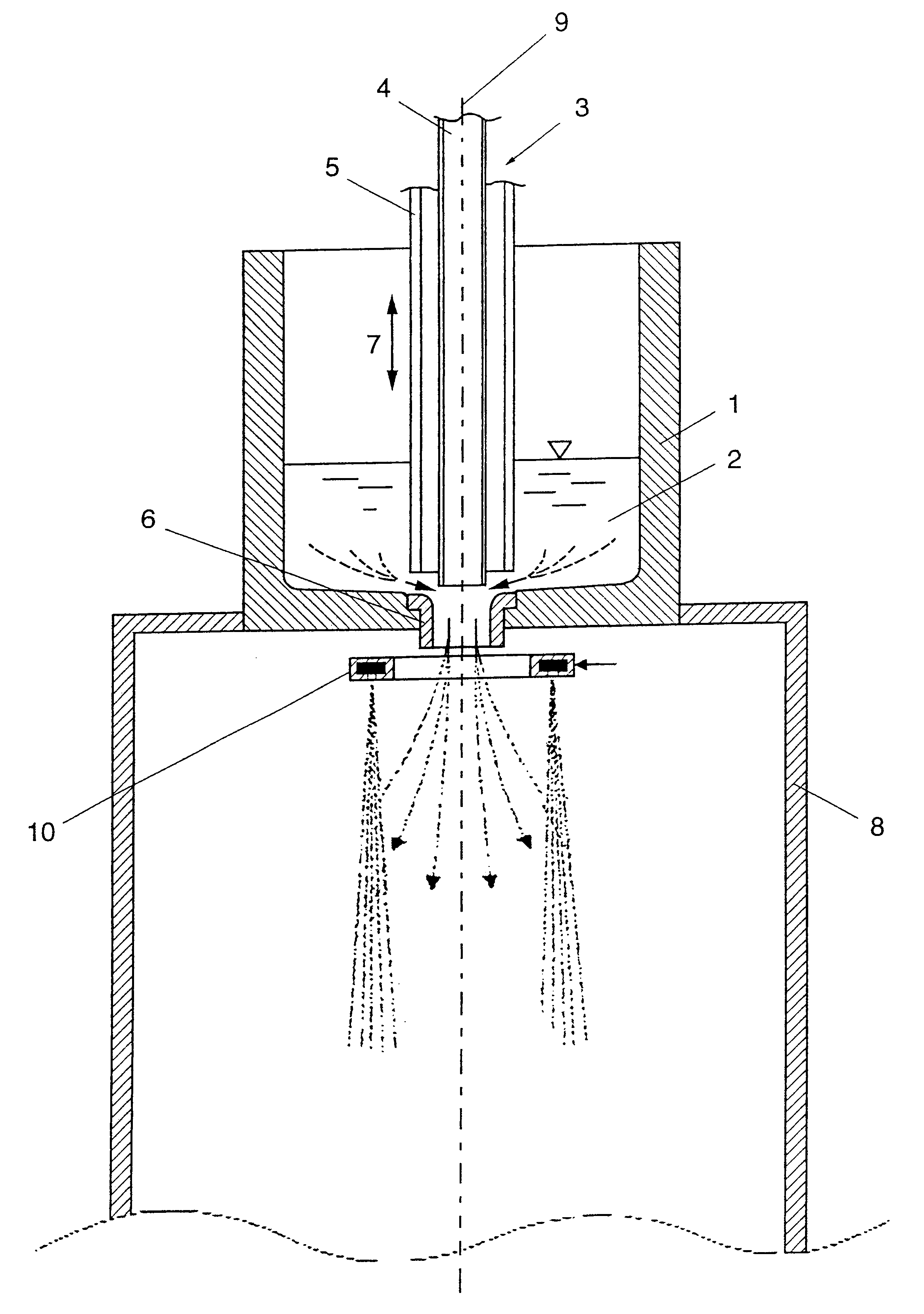Device for atomizing liquid melts
- Summary
- Abstract
- Description
- Claims
- Application Information
AI Technical Summary
Benefits of technology
Problems solved by technology
Method used
Image
Examples
Embodiment Construction
In FIG. 1, the bottom and a side wall of a slag tundish are denoted by 1. In the tundish is contained a molten slag 2 in which a lance 3 is immersed. The lance 3 is comprised of an internal tube 4 made of high-temperature-resistant steel and an external tube or sleeve 5 made of graphite. In the bottom of the slag tundish is arranged a nozzle block 6 which itself may again be made of graphite, wherein, when using graphite for the material of the sleeve 5 and the nozzle block 6, it merely has to be taken into account that the melt 2 will not contain any materials in which carbon is soluble. This holds, in particular, if the melt is no iron melt and if the melt contains neither iron oxides nor chromium oxides.
The two structural components of the lance 3, i.e., the internal tube 4 and the sleeve 5 may each be separately adjusted in height in the sense of double arrow 7. A displacement of the external sleeve 5, on the one hand, defines the width of the inlet gap for liquid melts. On the ...
PUM
| Property | Measurement | Unit |
|---|---|---|
| Temperature | aaaaa | aaaaa |
| Electrical conductivity | aaaaa | aaaaa |
| Size | aaaaa | aaaaa |
Abstract
Description
Claims
Application Information
 Login to View More
Login to View More - R&D
- Intellectual Property
- Life Sciences
- Materials
- Tech Scout
- Unparalleled Data Quality
- Higher Quality Content
- 60% Fewer Hallucinations
Browse by: Latest US Patents, China's latest patents, Technical Efficacy Thesaurus, Application Domain, Technology Topic, Popular Technical Reports.
© 2025 PatSnap. All rights reserved.Legal|Privacy policy|Modern Slavery Act Transparency Statement|Sitemap|About US| Contact US: help@patsnap.com



